MTD for ITSA: what you need to know
Next phase of digital tax scheme to start in 2026.
Making Tax Digital for income tax self-assessment (MTD for ITSA) was originally set to roll out in 2018, but the road to personal tax digitalisation has been relatively rocky to date.
While the Government successfully introduced MTD for VAT for returns starting on or after 1 April 2022, MTD for ITSA has been postponed five times in as many years.
The latest delay means that self-assessment customers won’t need to comply until 6 April 2026. These new rules won’t affect all taxpayers at once, either; instead, a more phased approach will aim to ensure the smoothest transition possible.
The phased approach
When MTD for ITSA arrives in April 2026, only self-employed sole traders and landlords with an income over £50,000 will be mandated to follow the rules. Those earning £30,000 and above will need to keep digital records from April 2027 onwards.
The Government has launched a review into accommodating the needs of smaller businesses and is yet to announce a date for extending the legislation to partnerships.
Reasons for the delay and other changes
According to the Institute for Chartered Accountants in England and Wales (ICAEW), this deferral offers an opportunity for the Government to “get MTD for ITSA right”.
The Treasury acknowledged that the economic challenges caused by the Covid-19 pandemic and the ongoing cost of living crisis are already putting a strain on businesses across the UK.
As such, transitioning to a new way of doing taxes will put a greater administrative burden on self-assessment customers, many of whom are still unaware of the requirements for MTD for ITSA.
The Government hopes that delaying the rules will give customers more time to get their finances in order and familiarise themselves with MTD-compatible software.
Furthermore, the proposed phased approach could benefit many taxpayers, particularly those earning less than £30,000 a year. With more time to spare, HMRC will be able to look into ways to adapt the new service to support those with the smallest incomes.
Meanwhile, the ICAEW stated that the delay was “inevitable” due to only a small number of people participating in the MTD for ITSA pilot and several problems with digitalising the tax reporting of certain kinds of income.
What you need to do for MTD for ITSA
Keep digital records
Once the Government introduces MTD for ITSA, self-assessment customers must create and store digital records of all business income and expenses using MTD-compatible software.
You can find a full list of compatible software on the HMRC website, and you still need to enter your Government Gateway user ID and password into your software and follow the instructions to authorise it.
Send quarterly updates to HMRC
Once set up, your software will automatically add up your digital records every three months, creating totals for each income and expense category.
These quarterly updates will give you an estimate of your tax bill. You do not need to adjust these updates if you don’t want to – but doing so may make the estimate more accurate.
Your software provider will also prompt you to send updates for each income source to HMRC every quarter. You will need to do this within a month of each standard quarterly period ending or else face a penalty.
Self-assessment customers with more than one business will need to meet the requirements for each individual business – that means separate records and separate submissions for each income source.
Finalise your business income
Instead of completing a self-assessment tax return at the end of each year, you will need to finalise your business income with a final end-of-period statement (EOPS).
If you need to make tax or accounting adjustments to your EOPS, you should do so before your final submission.
For the time being, it looks like the current deadlines for tax payments and payments on account will stay the same, so you’ll still need to keep those dates in your diary.
According to HMRC, your software provider will help you meet these requirements, prompting you to send updates in time and advising you on how to adjust to this new way of working.
You can authorise an agent to act on your behalf if you prefer. That means that if your accountant is already handling your self-assessment returns under the current rules, you won’t need to re-authorise them for MTD for ITSA.
While making the transition to MTD for ITSA is a significant change, there are many advantages to keeping digital records beyond simply helping you stay compliant.
Why you should keep digital records
Technology has revolutionised how we do our taxes, and paper records are quickly becoming a thing of the past – not just because of upcoming MTD rules. Storing your financial records digitally offers a wide range of benefits.
Instant updates
Keeping digital records means no more scrambling around for the latest financial statements. Instead, all the information you need can be stored in the cloud and updated in real time.
Once you’re signed up, you’ll be able to create instant reports and forecasts with the confidence that you’re always working on the most recent figures.
Furthermore, automatic quarterly updates under MTD for ITSA will allow you to keep a closer eye on your estimated tax bill throughout the year, giving you more time to put cash aside before the self-assessment deadline.
Freedom to work from anywhere
It doesn’t matter whether you’re at home, in the office, or on a long train journey – so long as you have a device with an internet connection, you’ll be able to log onto your account and view real-time data with ease.
Stay secure
MTD-compliant software can also help you keep your data secure. You’ll be able to restrict access to financial information to the people you choose and revise permissions at the click of a button.
Storing everything digitally will also make it easier to create backups, helping to ensure you don’t lose important data.
Easy collaboration
Cloud accounting software is also perfect for collaborating with your accountant on the go. Multiple users can access the same data simultaneously, allowing you to work on tasks with others and reducing the risk of anyone using outdated information.
Starting your digital journey
While MTD for ITSA rules won’t come into effect for a few years, going digital sooner rather than later will help you prepare well ahead of 2026.
Get in touch to find out how we can support your business with MTD for ITSA.





